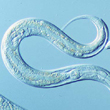Tuesday, 2 April 2013
The Brain from Top to Bottom Turns to Its Readers for Funding
 As you can read in the column to the right, after having sponsored us for more than 10 years, the CIHR Institute of Neurosciences, Mental Health and Addiction has been forced by budget cuts to cease our funding as of March 31, 2013. We were given the news in August 2012, and ever since our little team has been looking for another source of stable funding to let us continue our mission of providing the general public with the best possible information about the brain and neuroscience.
As you can read in the column to the right, after having sponsored us for more than 10 years, the CIHR Institute of Neurosciences, Mental Health and Addiction has been forced by budget cuts to cease our funding as of March 31, 2013. We were given the news in August 2012, and ever since our little team has been looking for another source of stable funding to let us continue our mission of providing the general public with the best possible information about the brain and neuroscience.
We have approached a number of organizations, all of which have recognized the value of our work, but we still have not succeeded in finding a sponsor. So for the moment, we are forced to turn to our readers for funding to let us continue updating and adding new content to this blog and this web site. (more…)
From the Simple to the Complex | Comments Closed
Monday, 25 March 2013
Donating Your Brain to Science
 People who donate their brains to be used in neuroscientific research after they die are making a great contribution to our understanding of normal aging and of aging-related disorders such as Alzheimer’s disease. Normally, such donations are made anonymously, but for the sake of an exhibition designed to draw attention to this humanitarian gesture, 12 brain donors aged 84 to 100 gave the organizers permission to disclose their identities. (more…)
People who donate their brains to be used in neuroscientific research after they die are making a great contribution to our understanding of normal aging and of aging-related disorders such as Alzheimer’s disease. Normally, such donations are made anonymously, but for the sake of an exhibition designed to draw attention to this humanitarian gesture, 12 brain donors aged 84 to 100 gave the organizers permission to disclose their identities. (more…)
Mental Disorders | Comments Closed
Tuesday, 19 March 2013
The “God” of Apple and His Disciples
 When Steve Jobs died, fans paid tribute by laying flowers and apples alongside burning candles at impromptu shrines around the world. One fan crafted the modified Apple logo shown here, with Jobs’s silhouette resembling what some Christians believe to the image of Jesus on the Shroud of Turin, a famous religious relic.
When Steve Jobs died, fans paid tribute by laying flowers and apples alongside burning candles at impromptu shrines around the world. One fan crafted the modified Apple logo shown here, with Jobs’s silhouette resembling what some Christians believe to the image of Jesus on the Shroud of Turin, a famous religious relic.
This analogy with religion may seem a bit forced, but not according to a study reported on the BBC documentary series Secrets of the Superbrands, which examines the cult-like devotion that some people display for major brands such as Apple. In this study, British neuroscientists tried to determine whether this analogy might be more than superficial. They were especially curious to see which parts of an Apple fan’s brain altered their activity when he was shown pictures of Apple products. (more…)
The Emergence of Consciousness | Comments Closed
Monday, 11 March 2013
Free Radicals and Aging: More Complicated Than We Thought
 In 2010, Dr. Siegfried Hekimi and his colleagues at McGill University in Montreal received a great deal of media coverage for their research showing that antioxidants, which many people take as food supplements to fight the damaging effects of free radicals, not only do not slow down the aging process but on the contrary might actually accelerate it. Even more unbelievably, when the researchers used Caenorhabditis elegans, a species of small worms, as an animal model and exposed them to an herbicide that is toxic to humans and generates a lot of free radicals, these worms lived 60% longer than worms who were not exposed to it! (more…)
In 2010, Dr. Siegfried Hekimi and his colleagues at McGill University in Montreal received a great deal of media coverage for their research showing that antioxidants, which many people take as food supplements to fight the damaging effects of free radicals, not only do not slow down the aging process but on the contrary might actually accelerate it. Even more unbelievably, when the researchers used Caenorhabditis elegans, a species of small worms, as an animal model and exposed them to an herbicide that is toxic to humans and generates a lot of free radicals, these worms lived 60% longer than worms who were not exposed to it! (more…)
Mental Disorders | Comments Closed
Monday, 4 March 2013
Remembering Every Day of Your Life
 Thanks to your episodic memory, you can easily remember what you ate yesterday or what you did last weekend. But if you try to go back a few weeks or months, or especially a few years, you’ll see that you’ve lost most of your autobiographical memories, except possibly for a few events with a strong emotional impact. Instead, your semantic memory will have taken over, generalizing from the recurrent features of your life to develop abstract concepts—and that is as it should be.
Thanks to your episodic memory, you can easily remember what you ate yesterday or what you did last weekend. But if you try to go back a few weeks or months, or especially a few years, you’ll see that you’ve lost most of your autobiographical memories, except possibly for a few events with a strong emotional impact. Instead, your semantic memory will have taken over, generalizing from the recurrent features of your life to develop abstract concepts—and that is as it should be.
But a very small number of people (about 20 have been identified to date) have highly superior episodic memories that let them recall what they did on virtually any specific day in their lives, 10, 20, or even 30 years later! (more…)
Memory and the Brain | 2 comments »







